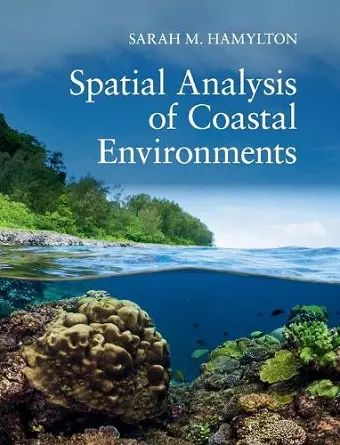Spatial Analysis of Coastal Environments
Format:Hardback
Publisher:Cambridge University Press
Published:13th Apr '17
Currently unavailable, and unfortunately no date known when it will be back

This book covers the spatial analytical tools needed to map, monitor and explain or predict coastal features, with accompanying online exercises.
This book covers the spatial analytical tools needed to map, monitor and explain or predict coastal features. Presenting empirical geographical approaches using recent technological developments, while providing detailed case studies on a range of coastal environments, it is an ideal resource for undergraduates studying spatial science.At the convergence of the land and sea, coastal environments are some of the most dynamic and populated places on Earth. This book explains how the many varied forms of spatial analysis, including mapping, monitoring and modelling, can be applied to a range of coastal environments such as estuaries, mangroves, seagrass beds and coral reefs. Presenting empirical geographical approaches to modelling, which draw on recent developments in remote sensing technology, geographical information science and spatial statistics, it provides the analytical tools to map, monitor and explain or predict coastal features. With detailed case studies and accompanying online practical exercises, it is an ideal resource for undergraduate courses in spatial science. Taking a broad view of spatial analysis and covering basic and advanced analytical areas such as spatial data and geostatistics, it is also a useful reference for ecologists, geomorphologists, geographers and modellers interested in understanding coastal environments.
'I wish this book had been around when I was a student! It ticks all the boxes: the primary focus on spatial analysis and interrogation of geospatial data is essential for sound, sustainable and evidence-based decision-making, and will give invaluable practical skills to students and practitioners alike; while the adoption of landscape ecology as the underpinning conceptual framework emphasises the need for joined-up, holistic and ultimately spatially-determined thinking in coastal science and management. The author shows a deep understanding of her subject matter, and her enthusiasm for, and love of, the coast stands out. Even the more complex ideas and methods are explained clearly and in an easily accessible, student-friendly manner. Although written for students of the coast, many of the concepts and methods introduced here will be readily transferrable to other areas of Earth Science specialism where geospatial expertise is needed.' Darius Bartlett, University College Cork, Ireland
'Spatial Analysis of Coastal Environments is a rare and overdue resource that provides a comprehensive overview as well an introduction to an array of important spatial analytical techniques and issues. Students and professionals new to coastal geographic information systems (GIS) will find the introductory coverage of data sources, mapping principles and analysis techniques easily accessible. Experienced researchers, coastal managers and planners, and instructors will take value from the coverage of advanced techniques such as geostatistics, modelling, and characterising uncertainty. The book is richly and usefully illustrated with both conceptual and case study maps and graphics. I expect this book to fill an important void and, through its readers, further expand the scientific and practical application of GIS to coastal environments.' Thomas R. Allen, Old Dominion University, Virginia
'It should become essential reading for students of coastal environments, demonstrating how spatial analysis methods, together with geographic information systems (GIS), can enrich and bring new insights to the study of this important field.' Robert Haining, University of Cambridge
'The text is accessible and well-written, and the chapters are well-structured. … I believe that the strongest selling point of this book is that Hamylton covers critical concepts that are all too often disregarded in other publications. The author does not present spatial analysis as a panacea and acknowledges the limitations of the approaches that are presented. … In conclusion, I would recommend Spatial Analysis of Coastal Environment for its scope and breadth (i.e., basic geographical analyses, mapping, monitoring, and explanatory and predictive modeling), well-defined terminology, multidisciplinary perspective, and treatment of concepts like spatial scale, data quality, and communication.' Vincent Lecours, Frontiers of Biogeography
ISBN: 9781107070479
Dimensions: 253mm x 194mm x 20mm
Weight: 930g
306 pages